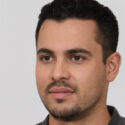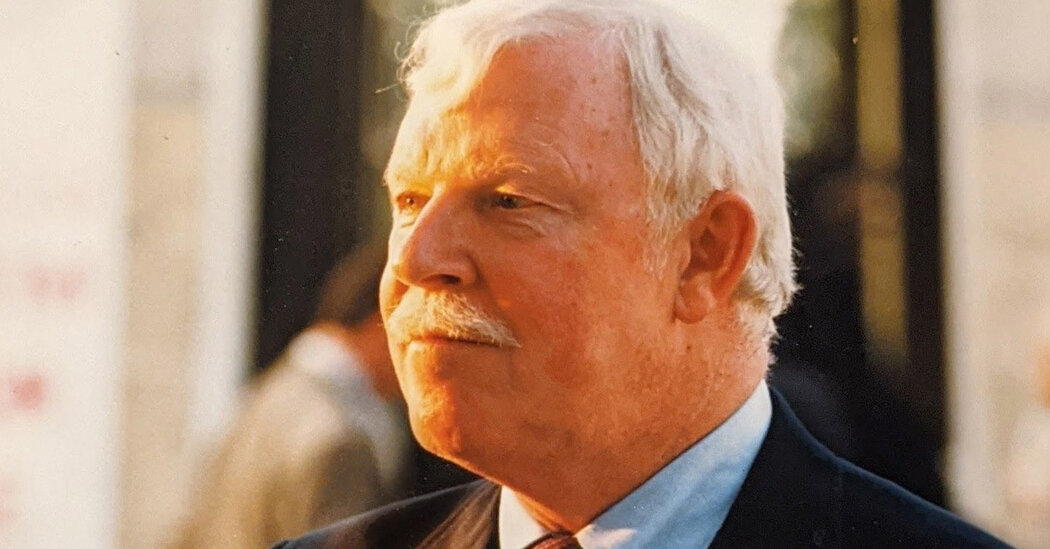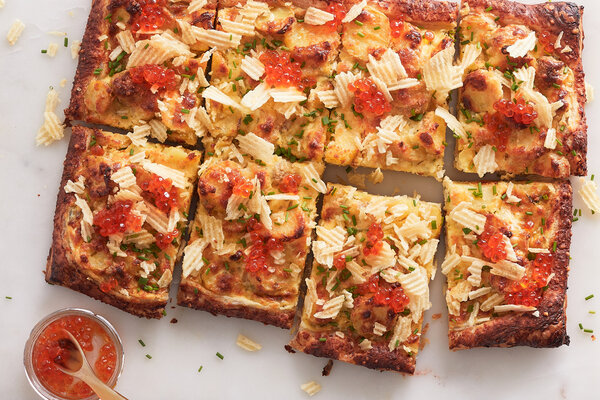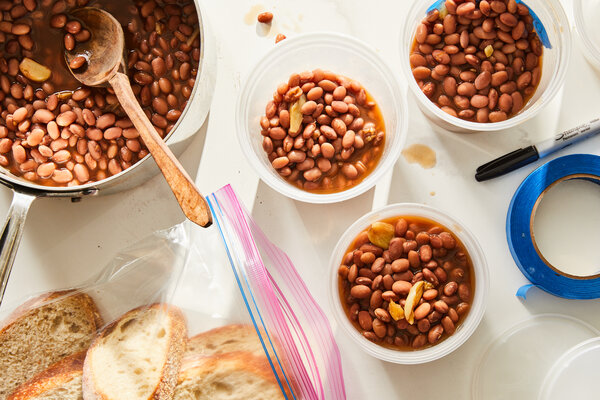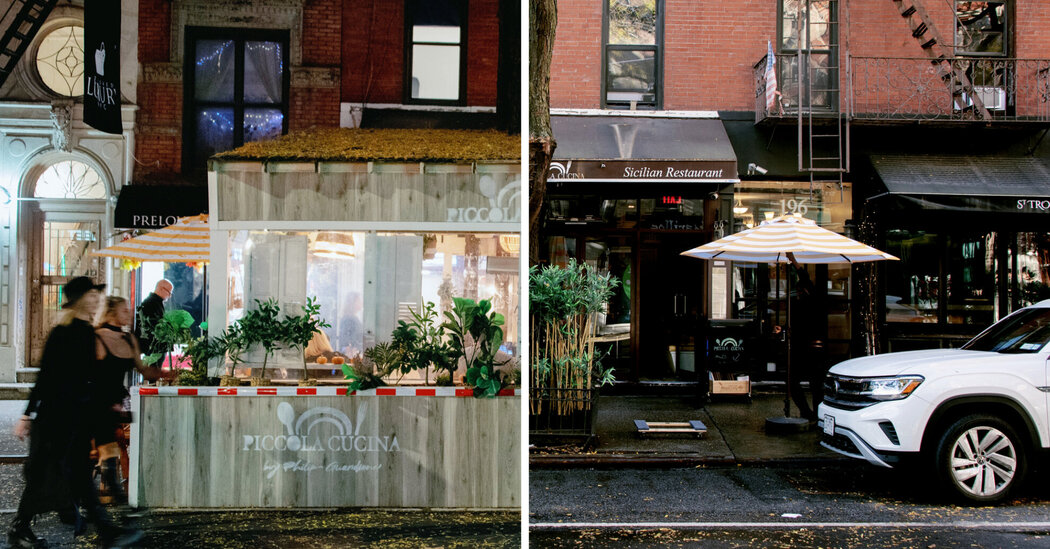Terry Robards, a former wine critic for The New York Times whose writing in the 1970s and ’80s helped Americans move beyond jug Chablis and cheap Chianti to explore regions and styles as far away — and, at the time, as exotic — as Burgundy and Tuscany and as close as upstate New York, died on May 23 at his home in Upper Jay, N.Y., near Lake Placid. He was 84.
His wife, Julie Robards, said the cause was heart failure.
The year 1976 was an inflection point for American wine culture. In France, two California wines beat out their French competitors in a blind tasting known as the Judgment of Paris. In the United States, Wine Spectator, the leading magazine for oenophiles, began publication.
And in New York, Mr. Robards wrote “The New York Times Book of Wine,” the first significant book to cover American wines.
Mr. Robards, who was then a financial reporter for The Times, did in his spare time what any good wine journalist would do: He toured vineyards and cellars around the country and in Europe, interviewing winemakers and gathering material for frequent articles and, ultimately, for his first book.
“Terry was not only coming to taste wines but also to understand the ‘why we do certain choices in our grape growing or winemaking paths,’” Véronique Boss Drouhin, the head winemaker at the Joseph Drouhin winery in France, wrote in an email. “He would listen carefully to the philosophy behind the viticulture and winemaking.”
By the late 1970s the book was introducing thousands of American readers to fine wine, and Mr. Robards was considered one of the country’s leading wine writers, a small, mostly self-taught cadre that included Robert Parker Jr., Anthony Dias Blue and Robert Lawrence Balzer.
Mr. Robards wrote articles with titles that would sound strange in today’s wine-fluent world, such as “The Case for Red Zinfandel” and “The Subject Is Rose,” which made the argument for rosé as an aperitif at a time when most Americans drank it as an awkward compromise between white and red wine.
He was later a wine critic for The New York Post and a senior editor for Wine Spectator. His other books include “California Wine Label Album” (1981) and “Terry Robards’ New Book of Wine: The Ultimate Guide to Wines Throughout the World” (1984).
Mr. Robards also established himself as a merchant in 1988 with a brick-and-mortar store, Terry Robards Wine and Spirits, in Lake Placid. It became a frequent destination for wine enthusiasts.
Mr. Robards and his wife used the store as a classroom, holding seminars and tastings that gave insight into regional styles, terroir, cellaring and various winemaking secrets.
Sherman Marshall Robards was born on Oct. 7, 1939, in Manhattan and grew up in Pleasantville, in Westchester County, N.Y. His father, Sydney, was an advertising executive for RCA, a job whose perks included owning one of the first television sets in the area. His mother, Louise (Sherman) Robards, was an artist who also wrote crossword puzzles for The Times.
Mr. Robards studied literature and French at Hamilton College, in upstate New York. After graduating in 1961, he worked briefly for The Ossining News, in Westchester, before joining The New York Herald Tribune as a financial reporter in 1962.
While on vacation in the Bahamas in 1965, he stumbled across the Beatles, who were filming their second movie. The production was so haphazard that it didn’t even have a name. An article that Mr. Robards wrote for The Herald Tribune captured the quartet’s debate over what to call it.
In the end, what could have been “Tomorrow Never Knows” (Ringo Starr’s idea) or “Who’s Been Sleeping in My Porridge? (suggested by George Harrison) or simply “Beatles Two” became “Help!”
When The Herald Tribune folded a year later, he joined Fortune as a monthly columnist. But, missing the excitement of a daily paper, Mr. Robards jumped to The Times in 1967.
He was in California on June 5, 1968, covering campaign finance when Robert F. Kennedy was shot while campaigning for president in Los Angeles. Mr. Robards got to the hospital just before the ambulance arrived and the authorities put the building on lockdown.
He and a few other reporters who were allowed to stay inside fielded calls and fed information to the outside world until Mr. Kennedy died from his wounds 25 hours later.
After receiving a contract for his wine book, Mr. Robards relocated from New York to London as a general assignment correspondent for The Times, but really with an eye on Europe’s wine regions.
“I’d work overtime to get every bit of vacation time I could and used it to go to France, Italy and Spain,” he told The Lake Placid News in 2021. “I’d find financial angles about wine so I could write articles and spend more time.”
His first three marriages ended in divorce. He married Julie Robinson in 2004 in a cellar at Remoissenet Pere et Fils, a winery in Beaune, France.
In addition to his wife, Mr. Robards is survived by his sons, John and Jeff; his stepson, Tim Robinson; two grandsons; and his sister, Brooks Robards.
His departure from The Times, in 1983, was not entirely pleasant. Through his agent, he had agreed to write a book about French wines. The book, however, was entirely financed by a French wine company, a fact that Mr. Robards said he did not know at the time.
His editors declared the book a conflict of interest and removed him as the paper’s wine critic. He left The Times a few months later for The Post.
Years later, in Lake Placid, Mr. Robards gained a new following as a wine educator, dinner host and raconteur, regaling guests with stories about wine and winemakers, as well as about his early days as a reporter.
He liked to recall one particular assignment during his time covering the automobile industry for The Herald Tribune. In 1963, he traveled to the Bonneville Salt Flats in Utah to watch land speed tests for the ultimately short-lived Studebaker Avanti.
Before the test driver got behind the wheel, Mr. Robards was allowed to drive the track, going fast enough to set the world speed record for a general production car.
Less than an hour later, the test driver set a new record. But for a brief stretch of time, Mr. Robards was one of the fastest drivers in the world.

